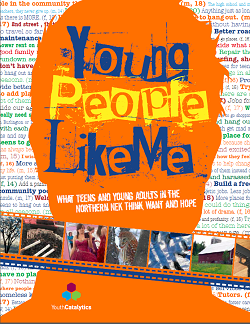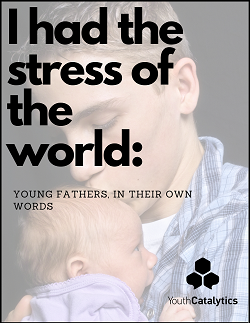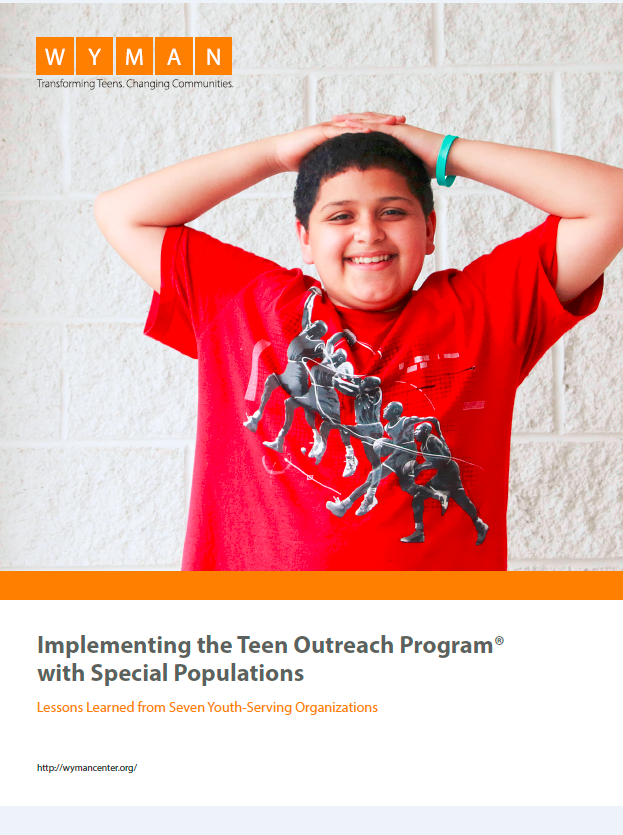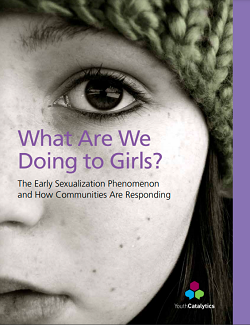Publications
Education & Training
Working Well Brief: Recruiting and Retaining Black Educators
Working Well Brief: Recruiting and Retaining Black Educators. National Center on Safe Supportive Learning Environments. (2024). Melanie Goodman and Mindi Wisman.
Research shows that students are more successful when they see diversity in the classroom. Students of color especially benefit from seeing adults who look like them in positions of authority; in fact, their academic performance significantly improves when they have a teacher who reflects their own racial or cultural identity. But, in the 2020–21 school year, just over 6% of U.S. teachers were Black and that number has been declining for years. In this brief we profile three programs that are inspiring more Black students and potential career-changers to consider a career in K–12 public education.
Human Trafficking and Exploitation Prevention Tip Sheet Series
Human Trafficking and Exploitation Prevention Tip Sheets. National Center on Safe Supportive Learning Environments. (2024). Mindi Wisman and Cindy Wilson.
This set of three tip sheets, developed by Youth Catalytics for the National Center on Safe Supportive Learning Environments, offers strategies K–12 educators can use to talk with youth about human trafficking and exploitation, examples they can use to help prevent vulnerable students from being trafficked or exploited, and guidance on now to begin a trafficking and exploitation prevention program in a K-12 school. Read or download the tip sheets by clicking on the titles below.
How Schools Can Start a Human Trafficking and Exploitation Prevention Program
How to Talk with Youth About Human Trafficking and Exploitation
Trafficking and Exploitation Prevention Strategies for Vulnerable Students
Natural Disasters and Head Start Facilities Guide
Natural Disasters and Head Start Facilities Guide: Assess, Prepare, Respond, Recover. (2024). Head Start National Center on Program Management and Fiscal Operations (PMFO). Deborah Fisher.
Provides information on how to prepare your facility for a natural disaster and to recover from one quickly from a facilities operational and fiscal management perspective. Head Start programs can use this guide in their disaster planning, preparing, and in implementing their own Head Start Facility Disaster Management Plan, including facility planning for natural disasters.
How Schools Can Combat Human Trafficking in Partnership with People with Lived Experience
Human trafficking in America’s schools: How schools can combat human trafficking in partnership with people with lived experience. National Center on Safe Supportive Learning Environments. (2022). Mindi Wisman, Melanie Wilson, and Tim Duffey.
This is a supplement to the 2021 revised and expanded 2nd edition of the National Center on Safe Supportive Learning Environment’s report Human Trafficking in America’s Schools, and is co-authored by Youth Catalytics’ Mindi Wisman and Melanie Wilson. It describes ways schools can partner effectively with people with lived experience of trafficking, and explores some of the unique benefits these consultants offer.
Human Trafficking in America’s Schools
Human trafficking in America’s schools: What schools can do to prevent, respond, and help students to recover from human trafficking (2nd ed.). National Center on Safe Supportive Learning Environments. (2021). Melanie Wilson and Tim Duffey.
This report is a revised and expanded version of the National Center on Safe Supportive Learning Environment’s 2015 report Human Trafficking in America’s Schools, and is co-authored by Youth Catalytics’ Melanie Wilson. It details the current prevalence of child trafficking in the U.S., information on risk factors and indicators of child trafficking, the implications for schools’ role in addressing child trafficking, information on how professional development of school staff and prevention education for students and families can reduce the likelihood of trafficking, and details on how policies, protocols, and partnerships with other community sectors can help prevent trafficking.
Staff Retention Tipsheet Series
RHY Staff Retention Information Sheet Series. (2019). Jennifer A. Smith, Melanie Wilson, and Cindy Carraway-Wilson.
This set of five information sheets, developed by Youth Catalytics for the federal Family and Youth Services Bureau, describes strategies for retaining quality staff in Runaway and Homeless Youth programs by focusing on self-care, organizational culture, hiring, compensation, and career pathways. The best and promising practices described in the tip sheets are relevant for frontline workers caring for children or adolescents in any setting. Read or download them by clicking on the titles below.
Building Career Pathways for RHY Staff | Creating a Self-care Culture in RHY Programs | Creative Compensation to Increase RHY Staff Retention | Hiring the Right People in RHY Programs | Nurturing Happiness in RHY Programs
Here for Good: Sustaining Your Runaway and Homeless Youth Program with Local Support
Here for Good: Sustaining Your RHY Program with Local Support. (2018). Jennifer Smith and Melanie Wilson. Family and Youth Services Bureau, 36 pp.
The work your RHY program does is vital. There’s no question about it — you know it, the youth in your programs know it, your partners know it, and your funders know it. But over the years, the competition for federal support of RHY programs has grown fierce. This workbook is meant to prepare you for life without the federal grant you’ve been relying on. It reframes sustainability as an opportunity to continue doing what works best while shaping your program in new ways your community and local funders will enthusiastically embrace and support.
The Hidden Workforce: How to Use Volunteers to Expand, Extend and Strengthen Your Services
The Hidden Workforce: How to Use Volunteers to Expand, Extend and Strengthen Your Services. (2010). Mindi Wisman. 54 pp.
Valentine makers, birthday cake bakers, marketers, mentors and financial fundraisers: need a little help expanding services to clients in these tough times? You’re not alone. For over a decade, experts have been telling the nonprofit world that an advancing wave of retired Baby Boomers would soon be at its doorstep, eager to share their free expertise. Now, due to demographics, the economy and evolving national policy, these volunteers are here. But are child, youth and family-serving agencies ready for them? Can they use volunteers in ways that truly improve their services, cut overhead and extend their reach? This toolkit takes a clear-eyed look at what volunteers can realistically do in child and youth serving organizations, and how to get started growing or improving your own volunteer program.
Adolescent Heart & Soul: Achieving Spiritual Competence in Youth-Serving Agencies.
Adolescent Heart & Soul: Achieving Spiritual Competence in Youth-Serving Agencies. (2005). Melanie Wilson, with Cindy Carraway-Wilson and Nancy Jackson. 56 pp.
In this first-ever study of spiritual programming in youth-service agencies, Youth Catalytics (then NEN) describes how spirituality programs – both secular and religious – look at agencies that do them well. These ‘spiritually competent’ agencies recognize spirituality as an important component of a holistic therapeutic approach, and deliver their spiritual programs in conformance with widely accepted standards of clinical care and the principles of youth development. This report is indispensable for social service professionals interested in incorporating spiritual activities into their own practice with young people.
Goodbye, Hello: A Generation of Executives Reflects on Retirement and the Future of Services for Children and Youth
Goodbye, Hello: A Generation of Executives Reflects on Retirement and the Future of Services for Children and Youth. (2006). Nancy Jackson and Sharon Vardatira. 18 pp.
We all know that the nonprofit world is heading for a leadership crisis as Baby Boomers retire and are replaced by far less-numerous Gen-Xers. The crisis is expected to be particularly acute for youth service agencies, which came into their own only in the 1970s, and now face losing the execs who founded them. This report includes in-depth interviews with 15 soon-to-be retiring executive directors in New England, and their thoughts on what it will take to make the next generation of leaders job-ready.
Youth Voice
101 Youth Voices: What Teens and Young Adults in the Southern NEK Think, Want and Hope
101 Youth Voices: What Teens and Young Adults in the Southern NEK Think, Want and Hope. (2010). Melanie Wilson and Jennifer A. Smith. 39 pp.
This youth survey and photo project conducted in the lower Northeast Kingdom area of Vermont features the voices and images of young people in one of the country’s most rural settings. Youth Catalytics (then NEN) produced it as a companion report to Young People Like Me, which was released as part of a federally funded demonstration project focusing on building better support systems for homeless youth in rural areas.
Young People Like Me: What Teens and Young Adults in the Northern NEK Think, Want and Hope
‘Young People Like Me: What Teens and Young Adults in the Northern NEK Think, Want and Hope. (2010). Jennifer A. Smith and Melanie Wilson. 40 pp.
This survey and photo project from the upper Northeast Kingdom area of Vermont tapped almost 300 young people on topics such as jobs, adults, school, their communities, and the challenge of becoming adults. 101 Youth Voices, a report of the findings from a similar project in the southern part of the NEK, is a companion report to Young People Like Me. Both were produced as part of a federally funded demonstration project focusing on building better support systems for homeless youth in rural areas.
Seeing Ourselves Successful: The Worcester Youth Photovoice Project
Seeing Ourselves Successful: The Worcester Youth Photovoice Project. (2009). Doug Tanner and Melanie Wilson. 20 pp.
Youth photovoice projects, in which young people learn basic photographic techniques and then go out into their communities to document what they think is interesting and important, have emerged as a powerful tool for personal growth and community change. In this project, a group of young people from Worcester, Mass., make observations, ask questions, deliver advice, and ponder the meaning of life, all through photographs of everyday scenes from their community.
Lots More Positive Attitude: What Youth in Windham County Say They Need to Be Happy, Healthy and Productive
‘Lots More Positive Attitude’: What Youth in Windham County Say They Need to Be Happy, Healthy and Productive. A Youth Survey and Photovoice Needs Assessment Project from Windham County, Vt. (2008). Cindy Carraway-Wilson, Andi Waisman and Melanie Wilson. 21 pp.
In 2008, Youth Catalytics (then NEN) became the lead agency in a federally funded project to build the capacity of youth-serving agencies in Windham County, Vt. As part of our county-wide needs assessment, we produced Lots More Positive Attitude, which reports the findings of a large youth survey and complementary youth photo project. The effort may provide inspiration to other coalitions setting out to understand the hopes and frustrations of young people.
A Part of You So Deep: What Vulnerable Adolescents Have to Say about Spirituality
A Part of You So Deep: What Vulnerable Adolescents Have to Say About Spirituality. (2004). Melanie Wilson. 48 pp.
This groundbreaking report is the second in a series by Youth Catalytics (then NEN) exploring spirituality in the lives of troubled adolescents. The first report, Practice Unbound, examined the therapeutic use of spiritually oriented activities by 200 youth-service agencies across the country. A Part of You So Deep focuses on teens themselves, using extensive focus group interviews, personal interviews and surveys to uncover their experiences of spirituality and their attitudes toward a variety of spiritual activities, both secular and religious. The findings, full of passion, confusion, disappointment, and yearning, illuminate the complicated inner world of our society’s most vulnerable teenagers, and offer crucial insight to counselors, teachers and anyone else committed to nurturing the spiritual lives of young people.
I Had the Stress of the World: Young Fathers, in Their Own Words
‘I Had the Stress of the World’: A Report on Young Fathers in Massachusetts. (1998). Melanie Wilson. Online.
This report examines the lives and attitudes of young fathers in several communities in Massachusetts from their own perspective. It includes first-person accounts of their struggles with school, jobs and money; their relationship with their children and their own fathers; and their dreams for the future.
Research & Evaluation
Practice Unbound: A Study of Secular Spiritual and Religious Activities in Work with Adolescents
Practice Unbound: A Study of Secular Spiritual and Religious Activities in Work with Adolescents. (2002). Melanie Wilson, 74 pp.
With this report Youth Catalytics (then NEN) produced one of the first comprehensive looks at the ways human service agencies are introducing secular spiritual and religious programming in work with troubled adolescents. Of a random sample of nearly 200 youth-serving agencies, reaching from the U.S. eastern seaboard to Alaska, Hawaii and Guam, 60% report using at least one secular activity — guided visualization and 12-step groups are the most common — and 35% offer at least one religious activity. Both secular and faith-based organizations that already offer spiritual activities strongly support them and intend to do more, but say they need more training. Of those agencies resistant to incorporating spiritual activities, many cite the dearth of conclusive evidence showing that it is beneficial. Others claim they lack time, money and staff. And still others have the impression that instituting such programs, especially those with religious content, could jeopardize board and community support as well as public funding. In fact, though, the risk of losing government funding appears to be minimal.
Implementing the Teen Outreach Program with Special Populations: Lessons Learned from Seven Youth-Serving Organizations.
Implementing the Teen Outreach Program with Special Populations: Lessons Learned from Seven Youth-Serving Organizations. (2015). Melanie Wilson and Jennifer A. Smith. 59 pp.
This resource draws on the experiences of seven Teen Outreach Program® projects implemented around the country between 2010 and 2015. Developed by Youth Catalytics for Wyman, the model’s owner, the resource is based on interviews with the first sizable cadre of agencies implementing TOP with special populations. The goal was to articulate and organize the many small adjustments and enhancements that proved effective for young people and for the systems that serve them. The publication provides dozens of concrete suggestions for optimizing the impact of TOP with youth in special circumstances, and for bolstering the policies and procedures that support TOP clubs. Such policies and procedures include the development of critical partnerships, the recruitment and retention of youth, and the implementation of lessons and CSL activities in specialized settings.
Bringing Mindfulness to Schools: Talk About Wellness Initiative Final Report
Bringing Mindfulness to Schools: Talk About Wellness Initiative Final Report. (2016). Jennifer A. Smith. 27 pp.
This report introduces readers to the use of mindfulness in schools and its current evidence base by describing the work of Talk About Wellness (TAW), which was a pioneer in introducing mindfulness practices to Vermont students and educators. School mindfulness programs have been gaining in popularity and represent a promising approach to addressing students’ social-emotional needs while at the same time preparing them for a competitive adult world. A detailed review of TAW’s activities, evaluation findings, and interviews with key stakeholders provides readers with insights and practical tools for introducing mindfulness in new learning environments, as well as an understanding of potential academic and lifelong benefits for teachers and students.
Evaluation of the S. Burlington, Vt. Inner Resilience Program
Evaluation of the S. Burlington, Vt. Inner Resilience Program. (2010). Melanie Wilson. 40 pp.
This evaluation of a contemplative education program in a Vermont public school system found a statistically significant decrease in stress and an increase in mindfulness and other facets of emotional health in teachers, and self-reported positive effects among children and in five classrooms.
Reach Out: Enhancing Services to Out-of-Home Gay, Lesbian, Bisexual, Transgender, Queer and Questioning Youth. Evaluation 2004-2006.
Reach Out: Enhancing Services to Out-of-Home Gay, Lesbian, Bisexual, Transgender, Queer and Questioning Youth. Evaluation 2004-2006. (2007). Marian Wolfsun and Sharon Vardatira. 23 pp.
Among youth who are unstably housed or in foster care, one population has continually emerged as particularly vulnerable: lesbian, gay, bisexual, transgender, queer and questioning youth. In rural areas such as northern New England, the needs of LGBTQ youth are made more acute by the level of geographic and social isolation. In response, in 2004, Youth Catalytics (then NEN) began implementing Reach Out, funded by the Tides Foundation, NH Endowment for Health, Gamma Mu Foundation, and the Gill Foundation. The three-year project sought to drive sustainable, institutional changes in the capacity of youth-serving agencies to effectively serve LGBTQ youth. The goal was to sensitize agencies about the specific needs of LGBTQ youth, thereby making the agencies more welcoming and thus more effective for this population of young people. The work was not easy, and the outcomes were mixed. But progress was made.
Supporting the Direct-Care Workforce in Children’s Behavioral Health Programs in New Hampshire
Supporting the Direct-Care Workforce in Children’s Behavioral Health Programs in NH. (2009). Melanie Wilson. 28 pp.
This study commissioned by the NH Endowment for Health looks hard at workforce issues in 16 organizations working with emotionally and behaviorally challenged youth in New Hampshire. The findings reveal frustrations on both sides: from administrators, who are constantly forced to do more with less; and from workers, who need both practical help and a greater sense that what they have to say about their clients actually matters. Are there fixes, even in these times? There are, the report concludes, but they involve thinking differently about old problems.
From Surviving to Thriving: How Communities Can Help Vermont’s Rural Homeless Youth and the Agencies That Serve Them
From Surviving to Thriving: How Communities Can Help Vermont’s Rural Homeless Youth and the Agencies That Serve Them. (2008). Melanie Wilson, Ed. 74 pp.
Transitional living programs (TLPs) located in rural areas have one of the toughest jobs in child welfare: connecting disadvantaged and sometimes troubled young people with services and opportunities that may barely exist. ‘Surviving to Thriving,’ a needs assessment of Vermont’s federally funded TLP system, looks at promising practices in rural programming for youth, and makes recommendations that can easily be generalized to Maine, New Hampshire, western Massachusetts, and other rural pockets of the country.
Toward Success: The Experiences and Recommendations of Seven Previously Homeless Families in Mashpee Village
Toward Success: The Experiences and Recommendations of Seven Previously Homeless Families in Mashpee Village. (2009). Melanie Wilson. 32 pp.
This white paper explores the experiences of seven families, all formerly homeless, seeking stability in an affordable housing complex in Massachusetts. The report was commissioned by the Mashpee Village housing development in an effort to understand why some previously homeless families succeed in permanent housing, while many others do not.
Unlocking the Potential of Homeless Older Adolescents: Factors Influencing Client Success in Four New England Transitional Living Programs
Unlocking the Potential of Homeless Older Adolescents: Factors Influencing Client Success in Four New England Transitional Living Programs. (2004). Megan Bartlett, Abby Copeman, Joshua Golin, Daniel Miller and Elana Needle. 36 pp.
This report examines the forces – internal and external – that shape the services that federally funded transitional living programs offer, and that influence their success and appearance of success. The study includes a detailed look at four TLPs in New England and interviews with their staff, and places the agencies’ stories in the context of the outcome data they report to the federal government. Edited by Melanie Wilson and Doug Tanner.
Where to Now? Innovative Housing Options for Homeless Young Adults Leaving TLPs
Where to Now? Innovative Housing Options for Homeless Young Adults Leaving TLPs. (2004). Kelly Agnese, Kate Golden and Jen Tyson. 30 pp.
Like all agency services, ‘aftercare’ housing programs are specifically designed to build the competence of young people and teach them how to live on their own. But housing programs have a more specific goal as well: to prevent young people from becoming homeless. This report is based on a comprehensive literature review and a series of interviews with the directors of five agencies and one housing expert in the field, all selected for their unusual commitment to developing innovative housing programs for youth leaving agency care. Where to Now? is the second in a series of reports Youth Catalytics has produced on issues critical to transitional living programs serving youth. Edited by Melanie Wilson and Doug Tanner.
What are We Doing to Girls? A Report on the Early Sexualization Phenomenon and How Communities are Responding
What are We Doing to Girls? A Report on the Early Sexualization Phenomenon and How Communities are Responding. (2009). Jennifer A. Smith and Mindi Wisman. 39 pp.
Girls are now entering puberty a full five years earlier than they did in 1920. Why, and with what evident consequences? In What Are We Doing to Girls? The Early Sexualization Phenomenon and How Communities are Responding, we identify a variety of forces that are driving the early sexualization of girls, from media and marketing to biological and social factors. While researchers explore reasons behind the trend, parents and communities are attempting to combat negative fallout for girls themselves. This report is based on a thorough review of scholarly literature and interviews with social workers, teachers, youth workers and girls themselves; it describes an array of community-based approaches to the problem as well as the theoretical underpinnings of these approaches and what evaluations have shown about their effectiveness.
Youth Work Practice: A Status Report
Youth Work Practice: A Status Report. (2011.) Mindi Wisman. 15 pp.
An estimated 3 million adults are professional child and youth care workers, supporting vulnerable children, teens and young adults on the sometimes perilous journey to adulthood. They work in a range of settings, from residential treatment facilities to juvenile justice programs to afterschool programs. Given the importance of youth workers to the positive development of young people at risk, it is critical that policymakers and the child welfare field itself look hard at the qualifications and professional trajectory of these workers: who they are, how they are trained, and how they are compensated. This report, produced by Youth Catalytics for ProYouthWork America, offers a point-in-time look at how one segment of this fast-maturing field – those specializing in teens and young adults – is tackling the challenges of professionalization. For several years, this segment of the field has struggled to define itself, to become a recognized and better-remunerated profession ready to take its place among educators, counselors and other professionals working with adolescents and young adults. How far has it come, and what remains to be done?



























